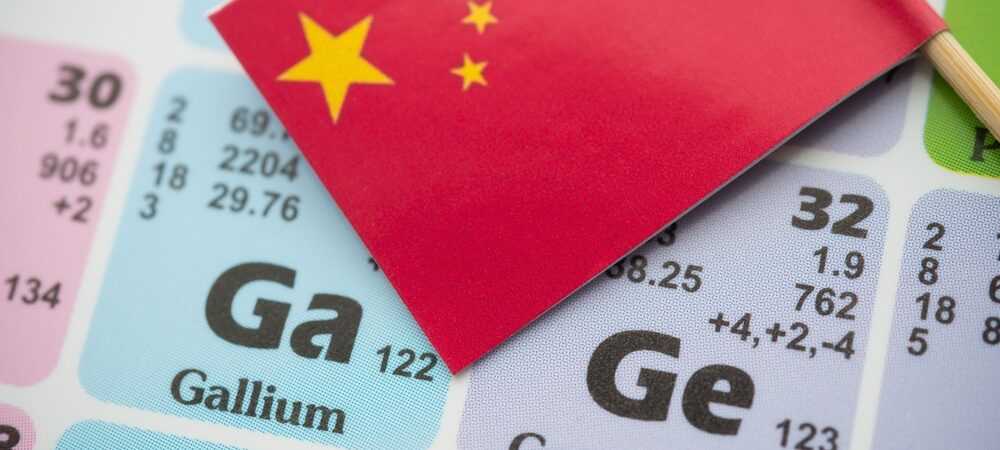China’s new export controls on rare earths, announced on 9 October 2025, extend the rules beyond physical goods to govern technological know-how and even foreign-made products using Chinese inputs. This is the latest step in a multi-year strategy, grounded in its 2020 Export Control Law, to regulate the export of strategic materials and technologies.
On 9 October 2025, the Chinese government announced various new export control measures for rare earths and related technologies, two of which deserve particular attention: restricting exports of related technologies and know-how and imposing licensing requirements on foreign firms. These steps follow a steady build-up of restrictions in recent years and should come as little surprise. In this short history, we provide a high-level overview of how China’s export control regime for critical raw materials has evolved in a multi-year strategy to regulate the export of strategic materials and technologies.
October 2025 Restrictions: A New Phase of Controls
China’s latest export control measures add a new dimension to its critical raw materials governance. Announced on 9 October 2025, the new rules extend beyond regulating physical exports to also restrict the transfer of rare-earth–related technologies and know-how. For the first time, Beijing is asserting jurisdiction over foreign-made products that contain or are manufactured using Chinese-origin rare-earth materials. Beijing now requires overseas firms to obtain export licences from the Chinese Ministry of Commerce. This shift signals a transition from managing commodities to governing strategic technologies, embedding export controls within China’s broader security and industrial policy agenda.
The Backstory: From Legal Foundations to a Comprehensive Regime
These developments build on several years of legal and regulatory consolidation. Since the adoption of the Export Control Law in late 2020, Chinese authorities have gradually constructed a unified, codified framework for managing dual-use and sensitive exports. Within this framework, China now operates on two distinct tracks. The first track is firm-specific measures, targeting individual entities for national security or foreign policy reasons. The second track is commodity-based controls, applying broadly to categories of minerals, materials, or technologies across entire industries. Together, these instruments have transformed China’s export governance from a collection of ad-hoc (and sometimes not publicly disclosed) restrictions to a more institutionalised set of rules and mechanisms.
Initially, China largely relied on other conventional trade policy tools – such as export tariffs, quotas, and rebate adjustments – to manage raw material supply and guide domestic upgrading. China phased out export quotas for rare earths in 2015, following a WTO dispute settlement. In the following years, the government started to more actively manage individual lists such as its catalogue of technologies prohibited or restricted from export or its catalogues of “dual-use” items subject to export control.
The strategy shifted in mid-2023 towards more targeted controls on specific critical raw materials. Authorities have since announced several separate licensing measures explicitly targeting critical raw materials: gallium and germanium (July 2023), graphite (October 2023), antimony and superhard materials (August 2024), tungsten and tellurium (February 2025), certain medium-to-heavy rare earths including gadolinium, dysprosium, and terbium (April 2025), as well as Items related to superhard materials, medium and heavy rare earth-related items, rare earth equipment, and lithium battery and artificial graphite negative-electrode materials (all October 2025). These materials underpin key technologies in electronics, renewable energy, and defence applications. In less than three years, export controls have broadened from a narrower focus on select metals to a comprehensive control system encompassing a wider range of critical raw materials, different value-chain stages, and related production technologies.
Strategic Application and Global Implications
The strategic logic behind adopting new measures is multilayered. While official statements emphasise national security and non-proliferation, the timing frequently coincides with geopolitical developments. Most notably, these overlap with US export controls or tariff actions, suggesting retaliatory symbolism.
The export restrictions appear to function as dynamic policy levers rather than absolute barriers, allowing for both escalation and de-escalation. Beijing has selectively granted export licenses following each round of controls. As a Global Trade Alert analysis from July 2025 has shown, the earlier export controls on gallium, germanium, graphite, and other materials had comparatively modest effects on American imports, while the rare earth export controls from April 2025 bit significantly harder. Following US-China economic talks in May 2025, Beijing suspended dual-use export control listings for several US firms, a useful bargaining chip in ongoing negotiations.
Ultimately, this pattern reveals a strategy that is both systematic and flexible. China has built a sophisticated administrative system to manage its strategic assets. At the same time, it has been using it as a geopolitical tool for signalling and leverage. The takeaway for global industries is that these controls are not temporary disruptions, but a permanent feature of the new competitive landscape. The question is no longer if China will use these powers, but how and where it will apply them next.
1760021892363_TL74To read the full blog as a PDF, click here.
To read the full blog, please click here.


